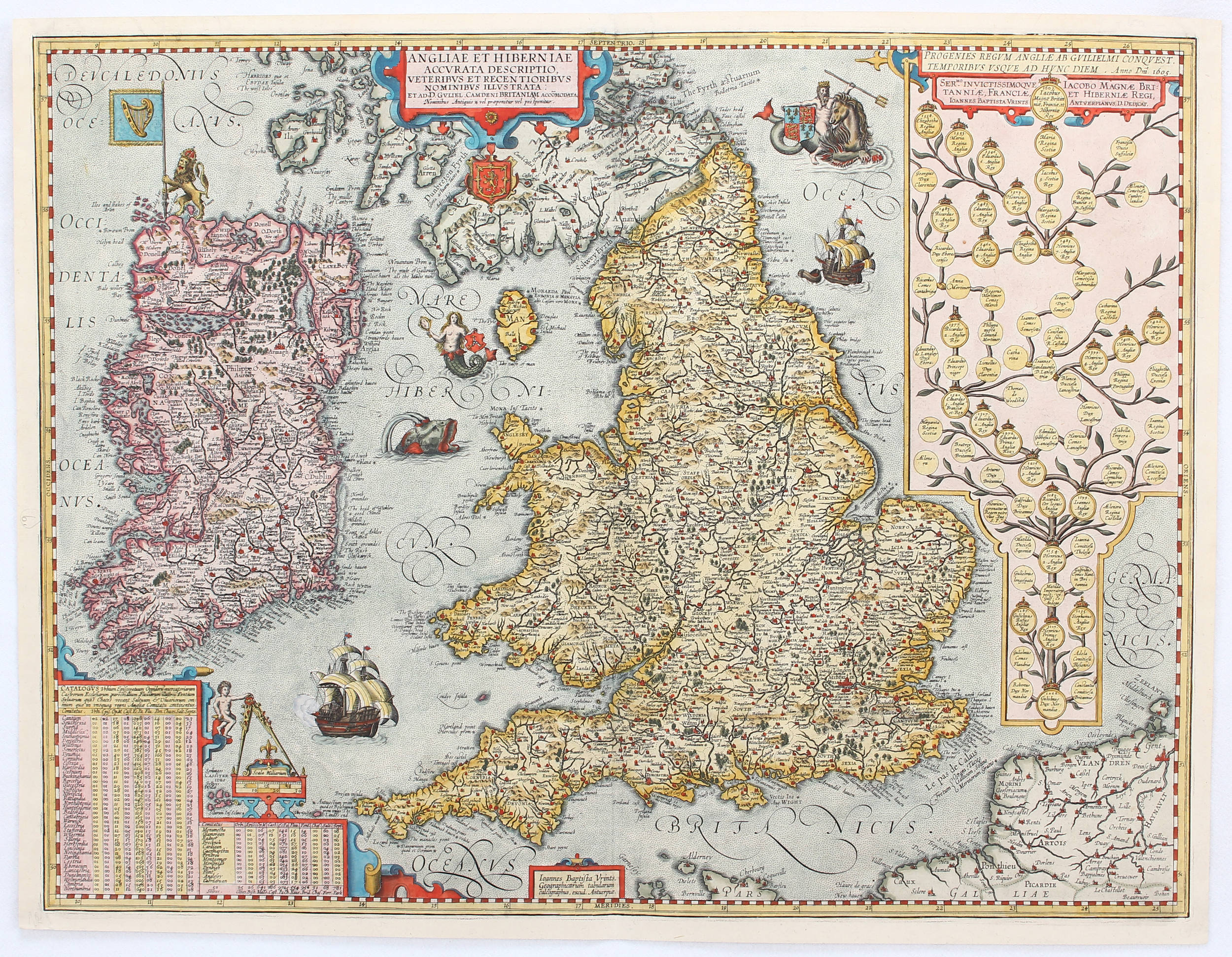ONE OF THE MOST FAMOUS MAPS OF AMERICA. ORTELIUS, ABRAHAM (1527-1598). Americae sive novi orbis, nova descriptio. [A New description of America or the New World]. Antwerp 1598 (state 3). Hand-coloured engraved map with large figurative cartouche with two lion sphinxes on top, sailing ships and seabeast. Surrounded by ornaments in the corners. French text on verso (titled Le novveauv monde), page number 5. About 355x485 mm. Framed with double-glazing. One of the most famous and decorative maps of America. Van den Broecke, 11, 1598F5; Burden 52. The 1598 French edition with the last line: nes)de la grandeur d'vn Asne,& de la façon bien pres d'vn Chameau, estant de coule rousse; 525 copies printed). This is state 3, with the bulge in South America removed and more sailing ships added in the Pacific Ocean and an elaborate cartouche added in North America. It is believed that this was the first apparence of Chesapeake Bay on a map. Ortelius's America "was widely sold throughout Europe and had a great influence on the future cartography of the New World" (Burden). First published in the Theatrum Orbis Terrarum 1570 which was "the first atlas produced that uniformly covered the world with similarly sized and styled maps" (Burden). "This plate without a bulge in the west coast of South America is the successor of plate Ort 10, which still has the bulge in the coast of South America. In this plate, there is also additional information on Terra Australis, Solomon Islands (discovered in 1568 by Pedro Sarmiento and Alvaro de Mendana) and added locations and notes on the west coasts of North and South America, possibly after Hakluyt. New cartouche in North America" (Van den Broecke).
ONE OF THE MOST FAMOUS MAPS OF AMERICA. ORTELIUS, ABRAHAM (1527-1598). Americae sive novi orbis, nova descriptio. [A New description of America or the New World]. Antwerp 1598 (state 3). Hand-coloured engraved map with large figurative cartouche with two lion sphinxes on top, sailing ships and seabeast. Surrounded by ornaments in the corners. French text on verso (titled Le novveauv monde), page number 5. About 355x485 mm. Framed with double-glazing. One of the most famous and decorative maps of America. Van den Broecke, 11, 1598F5; Burden 52. The 1598 French edition with the last line: nes)de la grandeur d'vn Asne,& de la façon bien pres d'vn Chameau, estant de coule rousse; 525 copies printed). This is state 3, with the bulge in South America removed and more sailing ships added in the Pacific Ocean and an elaborate cartouche added in North America. It is believed that this was the first apparence of Chesapeake Bay on a map. Ortelius's America "was widely sold throughout Europe and had a great influence on the future cartography of the New World" (Burden). First published in the Theatrum Orbis Terrarum 1570 which was "the first atlas produced that uniformly covered the world with similarly sized and styled maps" (Burden). "This plate without a bulge in the west coast of South America is the successor of plate Ort 10, which still has the bulge in the coast of South America. In this plate, there is also additional information on Terra Australis, Solomon Islands (discovered in 1568 by Pedro Sarmiento and Alvaro de Mendana) and added locations and notes on the west coasts of North and South America, possibly after Hakluyt. New cartouche in North America" (Van den Broecke).















Try LotSearch and its premium features for 7 days - without any costs!
Be notified automatically about new items in upcoming auctions.
Create an alert